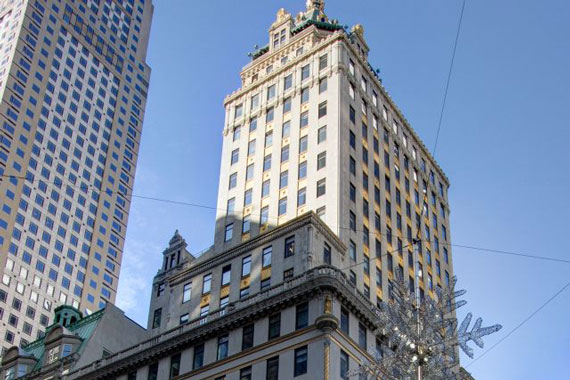Trending
The flip side of retail
While rents are breaking records</br> on top-notch strips, market shows</br> a ‘tale of two cities’

The huge surges in retail asking rents over the past several years in popular shopping districts in Manhattan such as Times Square, Fifth Avenue and Soho have exaggerated just how strong the market is. In reality, there are massive differences between high-street retail and mom-and-pop districts.
The astronomical retail prices that landlords are achieving on Fifth Avenue, such as the $5,500 per square foot that Jeff Sutton and General Growth Properties landed in October for one 3,000-square-foot space at 730 Fifth Avenue, are more than 50 times higher than a handful of spaces only a few blocks away.
“The spread has grown,” said Jason Pruger, executive managing director at brokerage Newmark Grubb Knight Frank. “I think it’s gone from a 10-to-1 [difference] to 50-to-1” over the past few years.
“It’s kind of a tale of two cities,” Pruger added.
The average asking rents began surging in premium Manhattan shopping neighborhoods in 2009, as the real estate industry recovered from the 2008 economic crash.
On Upper Fifth Avenue, for example, the asking rents more than doubled to $3,683 per foot in 2015 from $1,631 per foot in 2009, figures from the Real Estate Board of New York show. But in less-touristy areas such as Third Avenue from 60th to 72nd streets, increases in rents have not kept up over the past six years, rising 32 percent to $363 per foot in 2015 from $275 per foot.
And those rents are far above side-street prices. For example, listing website Agorafy shows several locations in Midtown asking under $100 per square foot, such as 240 East 56th Street, which listed for $90. The landlord inked a lease there last month to a dry cleaner, according to the listing agent Ana Peralta, of A Class Realty.
Of 357 Manhattan listings south of 60th Street that were posted in Agorafy and labeled as ground-floor spaces, 69 were asking under $100 per square foot, an analysis by The Real Deal found. The greatest concentration of them — a dozen— were in the East Village. For example, at 189 Avenue C, a 2,300-square-foot space is asking $58 per square foot, and a 900-square-foot space at 328 East 6th Street is on the market for $61 per foot.
There are various factors driving the price differences. The most obvious is location. With more shoppers come higher rents.
“On Broadway in Soho the rents are nearing $1,000 per foot, but on the side streets you can get $150 per foot,” said James Famularo, senior director at Eastern Consolidated.
“It’s crazy. It just shows the contrast from block to block.”

James Famularo
In other cases, a recently acquired or recently refinanced property may have requirements from the lender that leases be executed at a certain price point — typically higher than neighboring rents, said Colby Swartz, a director at owner-and-brokerage firm Suzuki Capital. Rents in high-traffic districts are also pumped up by retail tenants who write off a portion of their rent for advertising. In other words, they don’t care that they’re overpaying for space because they want a high-profile location to boost their image.
And there are, of course, factors that drive down retail rents such as dilapidated spaces that landlords leave untouched or nearby construction. “Scaffolding is the kiss of death,” Swartz said.
However, Morris Sabbagh, a broker with Kassin Sabbagh Realty, said as top-notch corridors increase in price, the second- and third-tier markets increase alongside it.
“The main corridors drive all,” Sabbagh said. “Rise or fall we all are attached by the hip with Fifth.”
Despite the lower-priced options, some local merchants still can’t make a go of it.
“Your local mom and pop are getting priced out,” Swartz, said.




